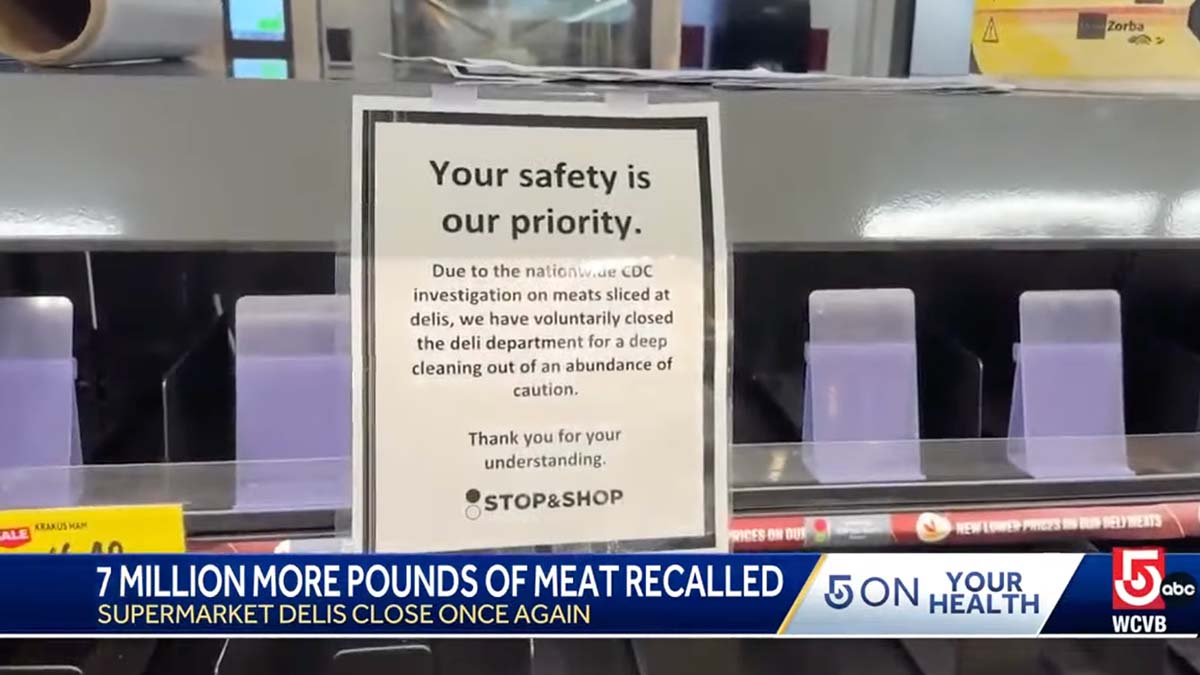Boar’s Head preserved meats have been linked to 9 deaths and 50 hospitalizations in 18 states. Government inspectors who visited the Virginia factory food processor logged 69 instances of non-compliance, ie mold, bugs, liquid dripping from ceilings, puddles of blood, rotten meat and fat residue on walls, floors and equipment.
Sounds grody. The facility will remain shut down until these food safety hazards have been sufficiently cleaned up.
Foodborne illness facts
Foodborne illness is caused by improper handling, unclean facilities, or other factors added to the food logistics equation by food processing. More than half of cases associated with foodborne illness are caused by eating out, not by receiving food direct-to-consumer and preparing it at home. From CDC:
- CDC estimates that each year roughly 1 in 6 Americans (or 48 million people) gets sick, 128,000 are hospitalized, and 3,000 die of foodborne diseases.
- More than half of all foodborne illness outbreaks in the United States are associated with restaurants, delis, banquet facilities, schools, and other institutions.
Per year in the US, raw milk is attributed to 761 illnesses with 22 hospitalizations and zero deaths among more than 10 million raw milk consumers. These are lower rates of illnesses than those attributed to leafy greens.
Processing foods with many processes
The process between production and consumption, lengthened by numerous operations, multiplies the food’s exposure to new environments and new microbes. Pathogens do not magically appear, they exist in the environment and can make their way into food. This allows for the creation of procedures, equipment specifications, and safety standards.
With raw milk, in its relatively short process from teat to bottle, sick cows or unclean equipment can harbor pathogens that enter milk. When meat is produced, then cooked, then sliced, then preserved, then packaged, then stored… many more environments are added to the mix which present opportunities for the food to meet new microbes.
This doesn’t mean we can’t process or additionally handle food, nine deaths out of millions of consumers doesn’t warrant suspicion over your next salad or sandwich – unless your ingredients came from the Boar’s Head plant in Virginia within the affected time period. I typically don’t get Boar’s Head, different brands are produced on west coast, but I’ve eaten plenty of it and will continue to unflinchingly embrace the opportunity. Serious food illness is not common, considering how much eating goes on, despite how hot and fast the articles fly as soon as a single, identifiable incident appears.
I’ll point out that nobody is saying we should ban lunch meat, or that Boar’s Head shouldn’t be allowed to produce it, and neither am I.
Big Food’s recent deregulation
Massive food processors need to be regulated. These companies will cut corners and need to be checked on. This factory wasn’t running a clean shop, its managers and employees allowed filth to build up all over the place.
Part of the reason may be due to the Big Food deregulation brought by Trump’s administration, under his appointee Sonny Purdue‘s leadership of The USDA. Many consumer protections were rolled back as a gift to big business, and this is one of the things that can happen. Read Trump Turns Back the Clock in America’s Meat Plants and 7 ways the Trump administration has deregulated the food system during the Covid-19 pandemic
Here are a few ways the Trump administration deregulated big food processors:
- Privatizing meat inspections: The administration privatized meat inspections for swine, allowing big food producers to self-regulate.
- Withdrawal of the Organic Livestock and Poultry Practices (OLPP) Rule: The Trump administration withdrew the OLPP rule, which was proposed by the National Organic Program in April 2016. This rule aimed to improve animal welfare standards for organic livestock and poultry producers, requiring them to provide animals with enough space to move around and access to outdoor spaces.
- Country of Origin Labeling (COOL): The Trump administration refused to reinstate the COOL rule, despite supporting it on the campaign trail, which required country-of-origin labeling for beef and pork products. This repeal allowed manufacturers to label products as “Product of USA” even if they contained imported ingredients.
- Rolling back GMO labeling requirements: The administration repealed a rule requiring manufacturers to label foods containing genetically modified organisms (GMOs).
- Allowing “natural” labeling on GMO foods: The administration allowed companies to use the term “natural” on food labels even if the product contains GMOs.
- Reducing oversight of organic labeling: The administration reduced oversight of organic labeling, making it easier for companies to use the “organic” label without meeting strict standards.
- Deregulating poultry processing speeds: The administration rolled back restrictions on poultry processing line speeds, allowing companies to increase production.
- Eliminating menu labeling requirements: The administration reduced menu labeling requirements for restaurants and food establishments, allowing them to provide less detailed nutrition information.
- Reducing labeling requirements for meat products: The administration reduced labeling requirements for meat products, including eliminating the requirement to label country of origin.
Crunchy cons whipped as usual
Raw milk bans in the federal jurisdiction of interstate commerce remained in effect throughout the Trump administration, through administrative policy of the USDA and FDA.
Raw milk legalization is almost always the creation of regulatory frameworks, not the decriminalization of selling unregulated raw milk, with exception to Montana and Wyoming who have deregulated farms under a certain small number of animals. In any case, raw milk was not included in Trump’s loosening of restrictions – just big business.
